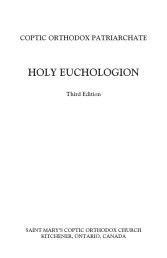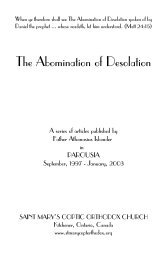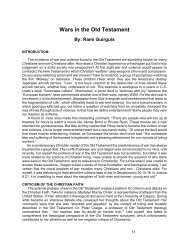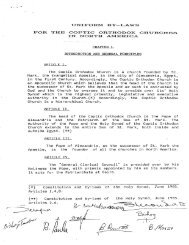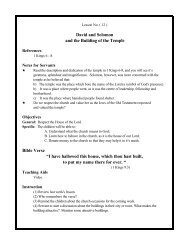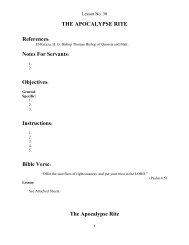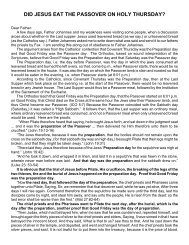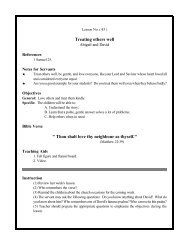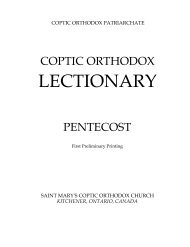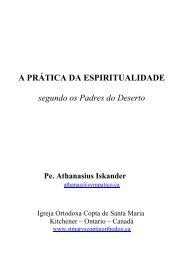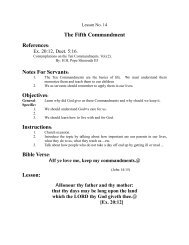Creation - St. Marys Coptic Orthodox Church
Creation - St. Marys Coptic Orthodox Church
Creation - St. Marys Coptic Orthodox Church
You also want an ePaper? Increase the reach of your titles
YUMPU automatically turns print PDFs into web optimized ePapers that Google loves.
years many other specimens were found, not only in the Neander<br />
Valley, but in countries such as France, England, Italy, Iraq and as far<br />
south as Israel.<br />
Controversy surrounded the interpretation of these fossils. German<br />
Anatomist Rudolf Virchow examined the first discovery and concluded<br />
that it was a Homo sapien with rickets, caused by a Vitamin D<br />
deficiency. He also theorized that his flattened head was due to<br />
powerful blows.<br />
In the early 1900s, after many skeletons were found, the French<br />
paleontologist Marcellin Boule, determined that Neanderthals could<br />
not fully extend their legs, walked stooped over, and had his head thrust<br />
forward. This notion would be the popular image for about fifty years.<br />
In 1957 researchers re-examined the skeleton Boule had examined<br />
and concluded that Neanderthals walked upright and that the stooped<br />
posture suggested by Boule's specimen was due to a case of arthritis.<br />
More evidence from various digs have shown that Neanderthals<br />
"wielded simple tools, wore body ornaments, had religious rites and<br />
ceremoniously buried their dead" (Time, 3/14/94, p. 87). Today he is<br />
classified as totally human - Homo sapiens. 1<br />
CRO MAGNON:<br />
Cro-Magnon man is one of the main types of Homo sapiens of the<br />
European Upper Paleolithic. It is named after the cave of Crô-Magnon<br />
in southwest France, where the first specimen was found.<br />
Cro-Magnons lived from about 40,000 to 10,000 years ago in the<br />
Upper Paleolithic period of the Pleistocene epoch. Cro-Magnon were<br />
anatomically modern, only differing from their modern day descendants<br />
in Europe by their more robust physiology and slightly larger brain<br />
capacity.<br />
When they arrived in Europe about 40,000 years ago, they brought<br />
with them sculpture, engraving, painting, body ornamentation, music<br />
and the painstaking decoration of utilitarian objects. They had a diet of<br />
meat, grain, wild carrots, beets, onion, turnip and other foods. All<br />
together they had a very balanced diet.<br />
Surviving Cro-Magnon artifacts include huts, cave paintings, carvings<br />
1 http://emporium.turnpike.net/C/cs/emnh.htm<br />
89



